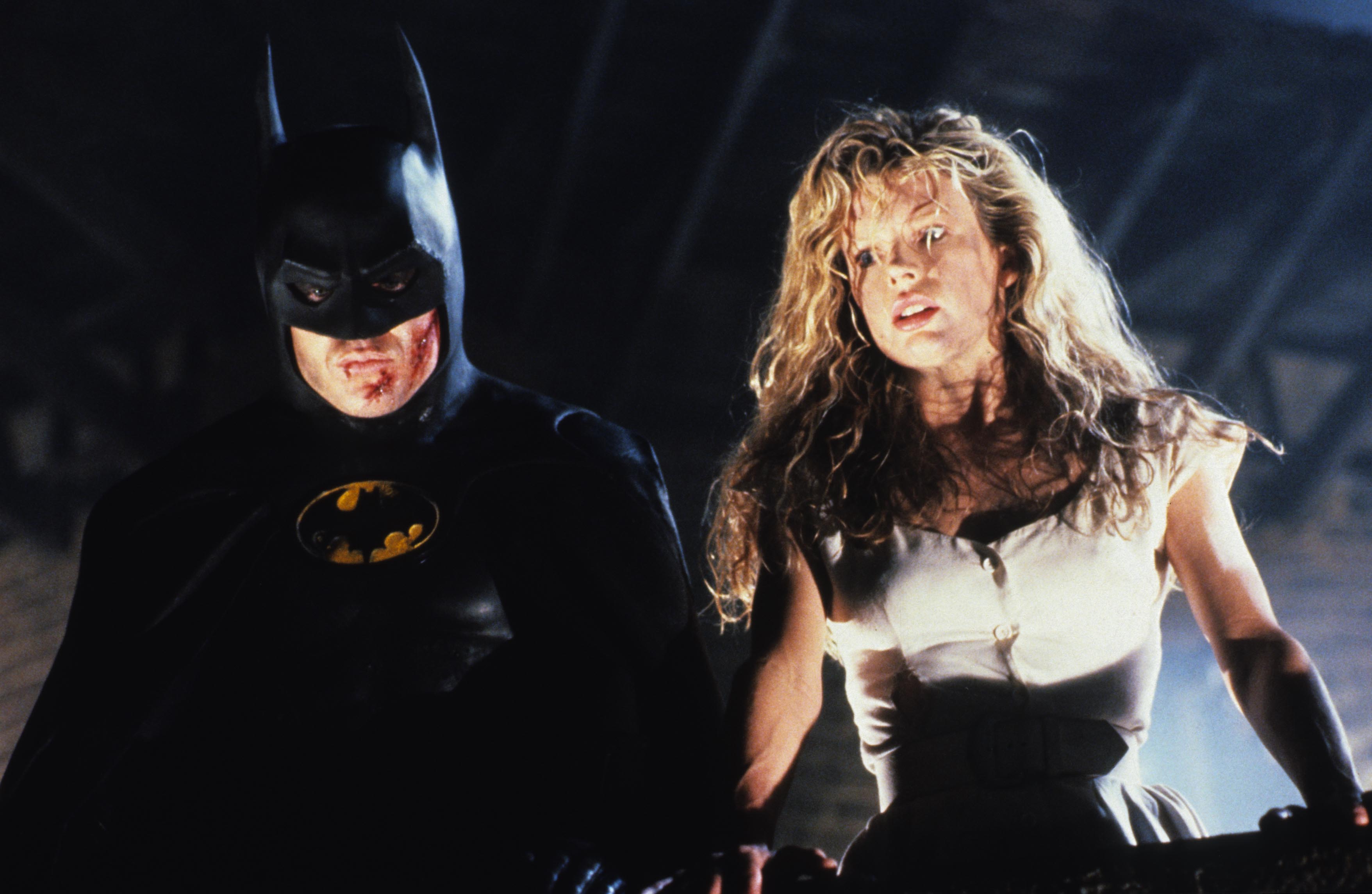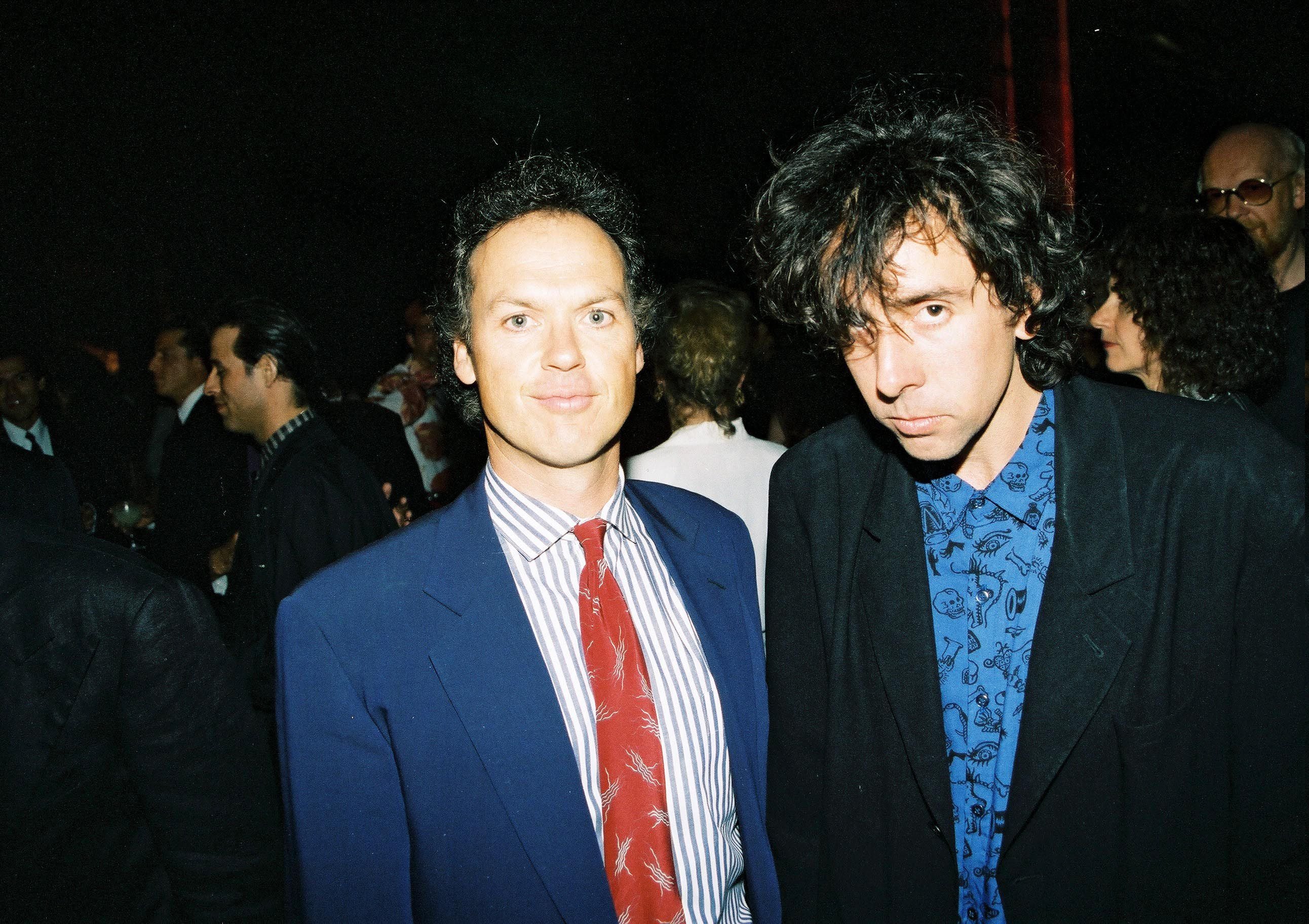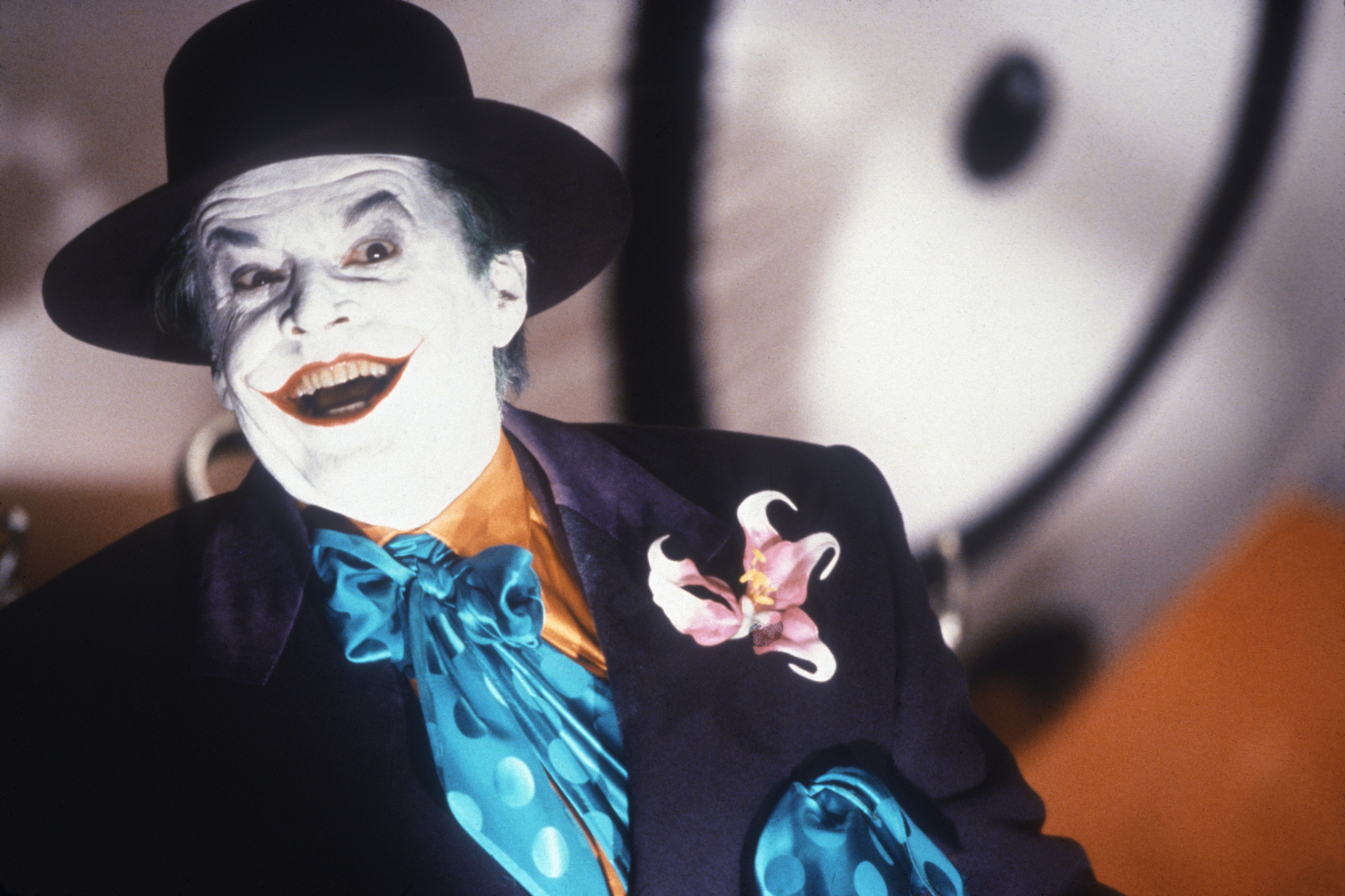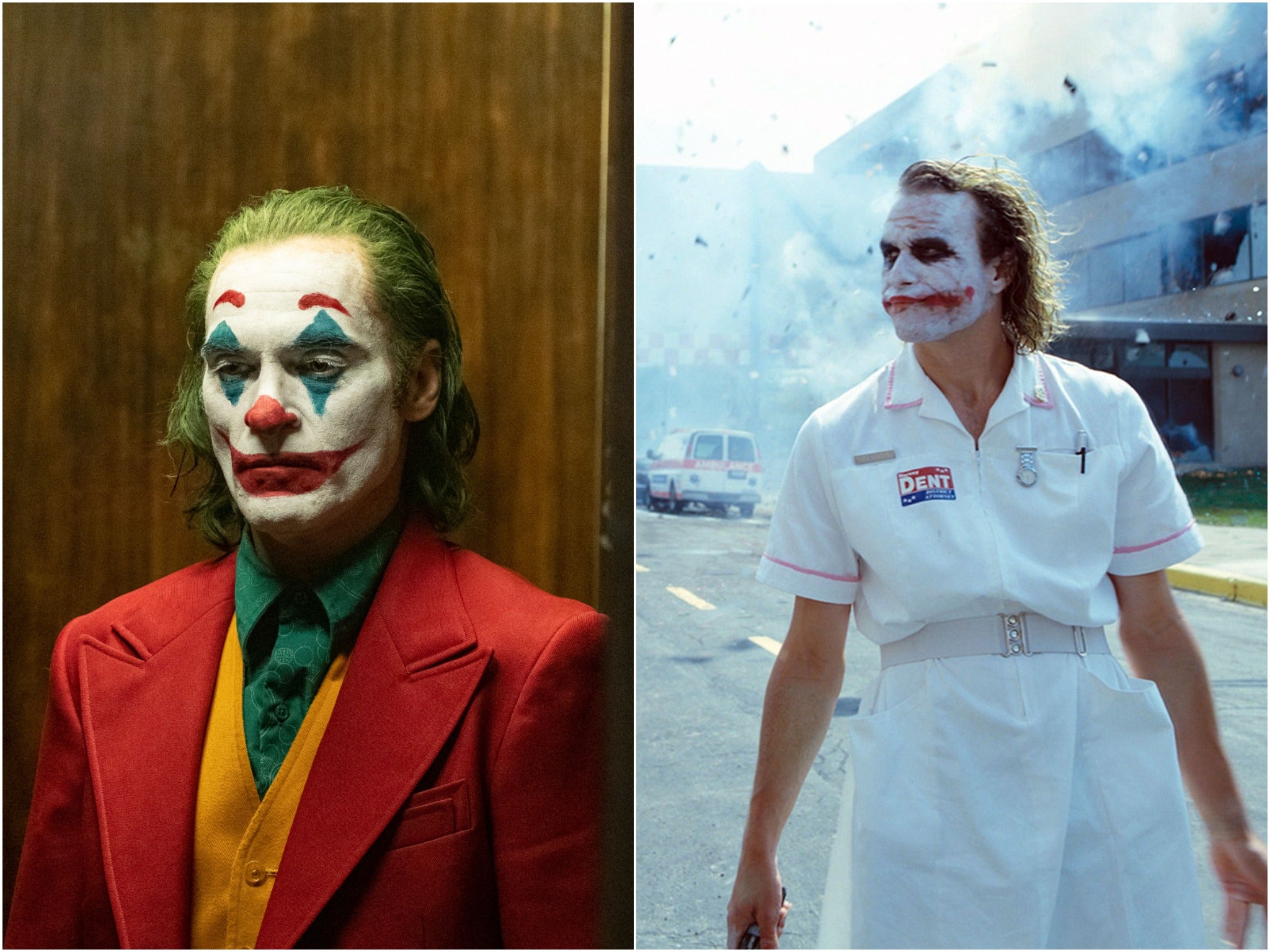‘The duel of the freaks’: What today’s superhero movies could learn from Tim Burton’s Batman
Ahead of Robert Pattinson’s Batman swooping onto screens, Geoffrey Macnab looks back at director Tim Burton’s quirky, auteurist approach to Gotham

Picture the torpor and distress at Pinewood Studios in the late 1980s, a period when the UK film industry was in the doldrums. The strength of the pound meant that the Hollywood majors were extremely reluctant to shoot on this side of the Atlantic. There were no tax breaks to entice them. The most recent James Bond film, License to Kill (1989), had committed sacrilege by doing most of its filming not at Pinewood but in faraway Mexico. Just when despair was setting in, Tim Burton came galloping to the rescue, bringing his film version of Batman to leafy Buckinghamshire. It was at Pinewood Studios that the director and the Warner Bros bosses decided to recreate Gotham City in all its sleaze, corruption and violence.
With the Robert Pattinson-fronted The Batman shortly to reach cinemas, it’s a timely moment to look back three decades to Burton’s first Batman movie starring Michael Keaton as the caped crusader and Jack Nicholson as the Joker. In hindsight, it appears one of the most influential films of its era – and is still the oddest, most original Batman movie ever made. The Marvel and DC screen adaptations that have dominated global box office in recent years owe it a huge debt.
After the kitsch, tongue-in-cheek approach of the Christopher Reeve Superman films of the Seventies and early Eighties, Burton allowed some much-needed darkness to seep back into screen adaptations of comic books. His Batman also proved that, for any self-respecting Hollywood studio looking to make a big budget franchise movie, the UK was the place to come.
Some of the initial reviews were equivocal. There was that familiar wariness that critics often tend to show when confronted with big, harsh new Hollywood blockbusters. The Guardian called Keaton’s Batman “a pale shadow of Bob Kane’s modestly likeable amalgam of Zorro and Superman who, when finally attacked by the wide and luscious lips of Kim Basinger’s Vicki Vale, looks like he might disappear altogether”.
“A brilliant film, visionary and extraordinarily idiosyncratic,” was how Burton’s fellow filmmaker Christopher Nolan (later to direct his own Dark Knight trilogy) described the 1989 movie. The final word used by Nolan is the most revealing. Burton’s Batman is every bit as quirky as his earlier films, Beetlejuice (1988) and Pee-Wee’s Big Adventure (1985).
One of the advantages of shooting at Pinewood was its emptiness. Like The Overlook Hotel in Stanley Kubrick’s The Shining (1980) – in which Nicholson refined the manic grin he later wore in Batman – the facility was desperately short of guests. Batman was almost the only production on the entire lot. This meant that Burton and his team had the run of the place. His visionary production designer Anton Furst, in charge of a team of more than 200 technicians, spent five months building the biggest outdoor set that had been constructed at the studios since 1960, for the ill-fated Elizabeth Taylor epic Cleopatra (1963). They recreated Gotham City in all its greyness and grime, a dystopian metropolis in which the sun never seems to shine. (Furst’s designs were so powerful that they influenced future editions of the comic books.)
Burton was drawing on the real-life reputation for squalor and corruption that New York then had. “A hellscape worthy of Hieronymous Bosch” was how one critic had written about the city as portrayed in Martin Scorsese’s Taxi Driver (1976) a decade before and the same description could just as well be applied to Burton’s Gotham. This too was a place full of creeps, low-lifes and degenerates.
At the same time, Burton was plundering Hollywood back history. The debt that Nicholson’s Joker owes to the Conrad Veidt character with the rictus-like smile carved on his face in Paul Leni’s The Man who Laughs (1928) is self-evident. It is clear that, in his depiction of the New York/Gotham criminal underworld, Burton is borrowing from, and sometimes lampooning, both hardboiled film noir and Godfather-style gangster pictures.

Burton being Burton, his Batman also has a cartoonish, fairytale atmosphere. One of its most famous scenes plays like something out of Charlie and the Chocolate Factory. This is where Jack Napier/The Joker is set up by his boss, Grissom (Jack Palance), and ambushed by the cops in the chemical factory. As pipes belch steam and bullets ricochet around him, Jack topples into a vat of boiling green liquid. It’s a typical Burton scene, at once horrifying and morbidly comic, and it ends with Nicholson’s hand in a tattered glove emerging from the bubbling liquid, like a submarine periscope, letting the audience know that, in spite of everything, the villain is still alive.
The colours are disconcerting. While the city has a dark and brooding quality, Nicholson’s Joker dresses in jaunty berets, strident purple suits and luridly bright green and orange shirts. He is as much a situationist prankster as he is a conventional movie villain, “the world’s first fully functioning homicidal artist” as he styles himself. In one of the film’s many oddball scenes, he bursts into a museum to the accompaniment of Prince’s song “Partyman”, gasses the guards, prances through the gallery and, with an elan that Banksy himself might have admired, scrawls his signature (“Joker was here!”) on Old Master paintings while smashing up Degas sculptures. He looks and behaves like Pee-Wee Herman in Pee-Wee’s Big Adventure, a character who seems to be on leave from a kids’ movie. His good nature, though, is belied by his utter malevolence.
In subsequent movies, Heath Ledger and Joaquin Phoenix both dug deeper into Joker’s heart of darkness than Nicholson does here, but he boasts qualities that these younger pretenders lack. He has a skittishness and delight in his own malfeasance. Ledger and Phoenix play the character as troubled, creepy narcissists. Nicholson’s Joker is funnier and less introspective. From time to time, he will tell us he is “crying on the inside”, but he is more discreet in his self-pity.

Burton, who billed his film as a “duel of the freaks” and “a fight between two disfigured people”, seemed to identify with the Joker every bit as much as he did with Batman. “The Joker is such a great character because there is a complete freedom to him … insanity is in some scary way the most freedom you can have, because you’re not bound by the laws of society,” the director told author Mark Salisbury in the book, Burton On Burton, suggesting that the character had a licence that would never be given to more sympathetic figures like Pee-Wee or Edward Scissorhands.
The casting of Keaton as Batman was considered very controversial by fans because the actor wasn’t the macho, alpha male type they had expected. Burton, though, had worked with him successfully on Beetlejuice and liked his manic quality and perversity. Besides, one of the points about Batman is that he is a flawed human, not a superhero – the millionaire socialite Bruce Wayne by day who dresses up and prowls the rooftops when night falls. In Burton’s Batman universe (including in the 1992 sequel Batman Returns), the misfits were never just the criminals.
The past 30 years have seen huge inflation in every aspect of comic book screen epics. Back in 1989, Batman seemed both very expensive and very long. Now, by comparison with The Dark Knight Rises or The Avengers, it plays like a chamber piece. Its two-hour running time is very modest when set against the three hours that almost any self-respecting Marvel or DC movie will clock in at.

It’s a long way from the Wham! Bam! Pow! comic book antics of Adam West’s Batman on TV in the 1960s to the Wagnerian, Method-style solemnity of Christian Bale in Christopher Nolan’s Dark Knight series. Fans of the Bale movies will probably find Burton’s Batman films to be lightweight and dated. An argument can be made, though, that Burton combines the best of both worlds. He deals with the demons in Bruce’s past in subtle and graceful fashion. (The first allusion to the murder of Bruce’s parents come when Kim Basinger’s Vicki Vale sees him laying flowers on the street where they were gunned down.) At the same time, he’s not above including goofy slapstick action sequences involving the Batmobile or Batman’s grappling wires.
The evidence suggests that Robert Pattinson’s Batman will have the same neurotic, oddball quality as Keaton’s caped crusader in Burton’s movie. As he said in a recent interview, his agents were initially surprised that he was so obsessed with the role. “[They] were like, ‘Oh, interesting. I thought you only wanted to play total freaks?’ And I was like, ‘He is a freak!’”
Most comic book screen adaptations pursue the same goals. They want both to astonish audiences and to appeal to them on an emotional level. This is what producers like Marvel Studios supremo Kevin Feige have been striving for over the past 20 years. It is also arguably what Burton achieved in his very first crack at the genre. His original Batman still stands as one of the few DC or Marvel adaptations that can justifiably be described as complete auteur filmmaking. Burton’s quirks and obsessions are evident in every frame. You never get that sinking feeling that accompanies so many superhero films today that he has had to compromise his vision for the sake of the foreign grosses or to keep the censors happy in China.
Tim Burton’s ‘Batman’ is available on Amazon. Matt Reeves’ ‘The Batman’, starring Robert Pattinson, is released on 4 March






Join our commenting forum
Join thought-provoking conversations, follow other Independent readers and see their replies
Comments